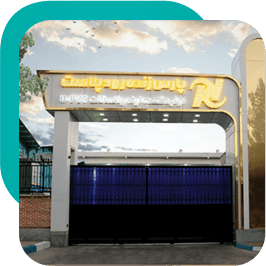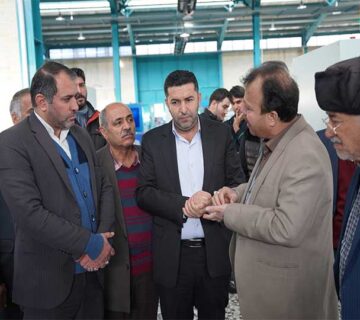The ISO 9001 standard includes 8 main clauses as follows:
- Scope of application: for example, the production of various industrial resins. The scope of application of each company is included in the ISO certificate that it receives after an external audit.
- The reference standard includes the requirements of the ISO 9001 standard.
- Terms and definitions:
In this standard, the company that implements the ISO system is called the organization, and the companies or individuals from whom materials or services are purchased are called suppliers.
- Quality management system: The preparation of the essential records and documentation for the implementation of the system are the objectives of this clause. The following documents must be prepared in order to implement the system:
4.1Quality policy:
The CEO of a company typically presents a single page to all of his employees explaining the company objectives and general quality policies.
4.2Quality goals:
According to the prepared quality policy, measurable quality indicators are determined and goals are set for the following years. For example, if the percentage of waste is currently 2.5%, the goal for the next year can be 2%. The program needs to be carefully prepared in order to accomplish these objectives.
4.3Regulations:
All the requirements of the standard are summarized in the regulations. This document, which is presented in the form of booklets, can be studied to learn how the system will be implemented in the organization.
4.4. Operational method:
In ISO 9001, at least 6 implementation methods should be compiled. These methods state who will do an activity, when and where. These compulsory implementation methods are a) document control b) record control c) non-conforming product control d) corrective action e) preventive action f) internal audit.
4.5. Instructions:
Depending on how complex the activities of an organization are, instructions must be developed to ensure that the work is done properly. The instructions explain how to complete the task (such as the instructions on how to work with the injection device or the CO2 welding device.)
4.6. Process maps:
An action that transforms input into output while utilizing the required resources is known as a process. The inputs, outputs, and resources required for the completion of each production, service, and management process must be specified. These resources include manpower or equipment and facilities. The process map displays the operations that are carried out on the resources, controls, inputs, and outputs.
4.7. Forms:
All actions, including production, inspection, testing, etc., must be documented in the relevant forms that are created specifically for each organization in order to carry out the ISO 9001 quality system. Tracking production records for all goods produced is made easier by using forms to record activities.
- Management responsibility:
Each person’s responsibilities, authority, and description of duties should be stated. Senior management must demonstrate its dedication to upholding both legal and legislative standards as well as customer expectations. The managing director selects one of his managers to act as the representative in order to guarantee the effectiveness of the quality management system. There must be a periodic list of all the reports that the various units of a company provide to the CEO or to one another. The managing director and other managers attend a meeting known as a management review meeting. This meeting is usually held 3 or 4 times a year. The purpose of this meeting is to review quality management and discuss quality problems, waste, customer complaints, continuous improvement, etc.
- Resource management:
Resources come in two categories: a) human resources, which are the people required to carry out all tasks, and b) infrastructure, which includes tools, buildings, spaces, hardware/software facilities, etc. The senior manager of the organization must provide sufficient resources for this purpose.
For tasks that have an impact on quality, the organization should employ qualified individuals.
The following 4 factors influence personnel competence:
1- Instruction
2- Experience
3- Education
4- Skill
The company should create a training program for every employee in order to improve staff competence. These training programs may take place inside or outside the company.
- Production
It is important to identify all customer-related processes and review all product-related requirements. The purchase procedure is one of the most important processes. Prior to making a purchase, any supplier, including sellers, producers of raw materials, freight services, repairers, etc., must be evaluated. Suppliers are typically divided into three grades: A, B, and C. The materials must be checked, inspected, and confirmed before being registered in the warehouse card index and distributed by the warehouse.
Each item in the warehouse requires an identifying and tracking code, as well as a description of its inspection status (approval, rejection, or conditional acceptance). All items, resources, and goods must have their storage requirements indicated. These requirements include the required temperature, storage space, humidity, etc. For this purpose, the organizations need to have appropriate warehouses. Therefore, it is advisable to compile the necessary production instructions. The instruction outlines how to do the task, as was already described. All of the equipment and systems need to undergo routine preventative maintenance in order to guarantee high-quality service. Any repairs, whether routine or unplanned, must be documented on the pertinent forms.
- Measurement, analysis and improvement
Based on the flowchart of the relevant processes, all processes should be managed and monitored. The level of customer satisfaction must be measured, and this can be done via forms that consumers can fill out or interviews that are conducted. For example, the quality objectives for the following months and years should be reviewed every three months. The quality management system must be put through an internal audit by several ISO steering committee members, before being subjected to an external audit by the certifying body. These auditors are trained by qualified consultants. Typically, internal audits should be performed twice or three times a year. The certifying body issues certificates that are valid for a maximum of three years, but they also undertake surveillance audits of the quality system once a year or every six months. An organization must take corrective and preventive actions to address all non-conformities in the system in order to improve the quality system. To enhance the quality of its production process, it should also define and carry out projects referred to as continuous improvement projects.
ISO 9000
The BS5750 quality management standard was introduced by England in 1978 as a way to improve quality in its organizations. Then, in 1987 and 1994, the International Standards Office revised this standard, which is now known as the ISO9000 standard. This standard was introduced as a reference for standardized quality management activities and was recognized by all nations. Since then, it has been adopted by numerous small and large organizations worldwide.




بدون دیدگاه